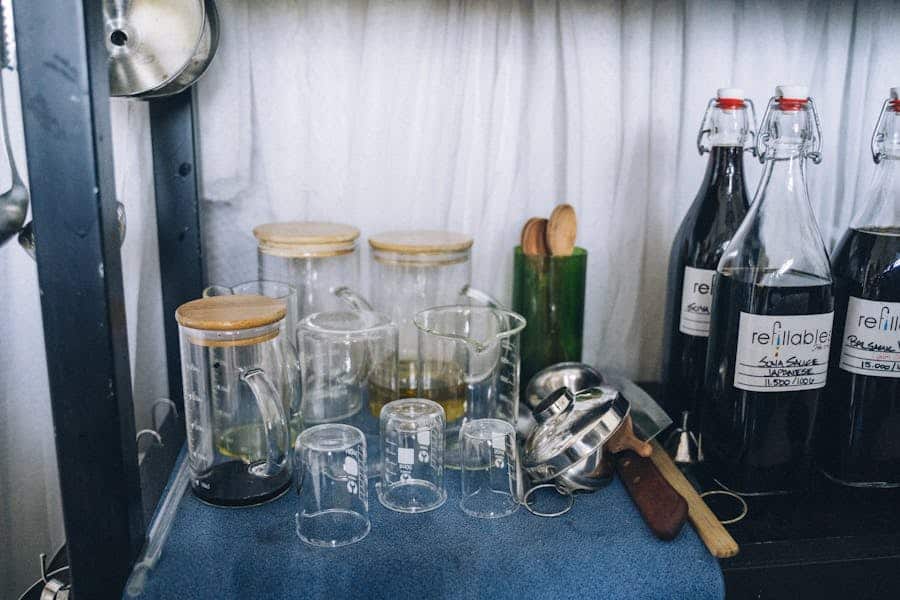Pyrex is a name synonymous with durable, high-quality kitchenware. For over a century, Pyrex products have found their way into kitchens around the globe, earning a reputation for reliability and resilience. However, a question that often arises among consumers is, “Is Pyrex made in the USA?” This question not only touches on the origins of a beloved brand but also concerns about quality, authenticity, and the impact of globalization on manufacturing practices. In this comprehensive article, we will delve into the history of Pyrex, examine where it is made today, and explore the implications of its production locations. We’ll also address common misconceptions and provide clear answers to frequently asked questions. Whether you’re a longtime Pyrex enthusiast or a new consumer curious about the brand’s roots, this article aims to provide a thorough understanding of Pyrex’s manufacturing journey.
Is Pyrex Made In The USA?
Pyrex, originally made in the USA, is now manufactured in various locations, including the USA and abroad. The brand’s shift reflects broader industry trends toward globalization, but it continues to uphold its reputation for quality and durability.
History And Origins Of Pyrex
Pyrex was first introduced by Corning Glass Works in 1915, marking a significant innovation in kitchenware. The brand’s origin is rooted in the development of borosilicate glass, initially used for railroad lanterns due to its durability and heat resistance. This unique glass type was adapted for household use, leading to the creation of Pyrex baking dishes and laboratory glassware. Early Pyrex products quickly became popular for their ability to withstand extreme temperature changes without breaking, making them indispensable in American kitchens.
During the early 20th century, Pyrex expanded its product line to include a wide variety of kitchen items. From measuring cups to pie plates, Pyrex became a household name, known for its reliability and practicality. The brand’s commitment to innovation was evident as it continuously improved its product designs and introduced new items to meet consumer needs. By the mid-20th century, Pyrex was not just a kitchen staple but also a symbol of American ingenuity and domestic life.
In the 1980s, Corning Glass Works sold the Pyrex brand to World Kitchen (now known as Corelle Brands). This transition marked the beginning of a new era for Pyrex, as the company began to explore more global manufacturing opportunities. Despite changes in ownership and production locations, the brand maintained its focus on quality and durability. The decision to produce some items overseas was driven by the need to meet increasing global demand while keeping production costs manageable.
Today, Pyrex products are manufactured in various locations around the world, including the USA. The brand continues to uphold its reputation for producing high-quality, dependable kitchenware. While the global manufacturing approach reflects the broader trends in the industry, Pyrex remains committed to its legacy of innovation and excellence. Consumers around the world still trust Pyrex for its durability, versatility, and the assurance of a brand that has stood the test of time.
Current Manufacturing Locations
1. Manufacturing in the USA
Pyrex still maintains significant manufacturing operations in the USA. This ensures that a portion of their products continues to embody the traditional American quality and craftsmanship that consumers trust.
2. Overseas Production
To meet global demand and maintain competitive pricing, Pyrex also manufactures products in various countries around the world. This includes production facilities in Europe and Asia.
3. Quality Control Measures
Regardless of where Pyrex products are made, stringent quality control measures are in place to ensure that every item meets the brand’s high standards. These measures include rigorous testing and compliance with international safety standards.
4. Impact of Globalization
The shift towards global manufacturing has allowed Pyrex to remain competitive in a crowded market. However, it has also led to some misconceptions about the brand’s commitment to quality, which remains unwavering.
Reasons Behind the Manufacturing Shift
- Cost Efficiency: One of the primary reasons for Pyrex’s shift in manufacturing locations is cost efficiency. Producing goods in countries where labor and production costs are lower allows Pyrex to maintain competitive pricing without sacrificing quality. This cost-saving strategy is crucial for staying relevant in a global market where consumers are increasingly price-conscious. By reducing production expenses, Pyrex can invest in research and development to continue innovating and improving its product line.
- Meeting Global Demand: As Pyrex grew in popularity, so did the global demand for its products. To effectively meet this increasing demand, the company needed to expand its manufacturing capabilities beyond the United States. Establishing production facilities in different parts of the world ensures that Pyrex can supply its products more efficiently to international markets. This strategic move not only supports the brand’s global presence but also reduces shipping times and costs, enhancing overall customer satisfaction.
- Technological Advancements: Advancements in manufacturing technology have played a significant role in Pyrex’s decision to diversify its production locations. Modern production techniques and machinery available in countries outside the USA can sometimes offer superior efficiencies and capabilities. By leveraging these technological advancements, Pyrex ensures that its products remain at the forefront of innovation and quality. These global manufacturing facilities adhere to the same stringent quality standards, ensuring that every Pyrex product upholds the brand’s reputation for durability and reliability.
- Resource Availability: Different countries offer varying levels of access to raw materials and other resources needed for production. By expanding manufacturing to locations with abundant resources, Pyrex can streamline its supply chain and reduce dependency on a single geographic area. This strategic resource management helps mitigate risks associated with supply chain disruptions and ensures a steady flow of materials necessary for production. This flexibility in sourcing materials contributes to the consistent quality of Pyrex products, regardless of their manufacturing origin.
- Economic and Trade Factors: Economic policies and trade agreements between countries can significantly impact manufacturing decisions. By operating in multiple countries, Pyrex can take advantage of favorable trade conditions and avoid potential tariffs or trade barriers. This global presence allows the company to navigate complex economic landscapes more effectively, ensuring that it can continue to provide high-quality products at competitive prices. Additionally, having a diverse manufacturing base helps Pyrex remain agile and responsive to changes in international trade dynamics, safeguarding its long-term business stability.
Comparing Pyrex to Other Brands
1. Pyrex vs. Anchor Hocking
- Origin: Both brands originated in the USA, with Pyrex having a longer history.
- Manufacturing Locations: Anchor Hocking remains primarily USA-based, while Pyrex has a more global footprint.
- Product Range: Pyrex offers a broader range of products, including glass and plastic kitchenware.
2. Pyrex vs. OXO
- Quality Control: Both brands emphasize rigorous quality control, but Pyrex’s long history in glassware gives it an edge in consumer trust.
- Innovation: OXO is known for its innovative kitchen tools, while Pyrex focuses on durability and reliability in glassware.
Conclusion
In conclusion, Pyrex’s journey from a purely American-made brand to a globally manufactured product line reflects broader industry trends. While some Pyrex products are still made in the USA, others are produced overseas to meet global demand and maintain competitive pricing. However, the brand’s commitment to quality remains consistent regardless of where the products are made. Consumers can continue to trust Pyrex for its durability, functionality, and adherence to high manufacturing standards.
FAQ’s
Is All Pyrex Made In The Usa?
No, while some Pyrex products are made in the USA, others are manufactured in various countries worldwide to meet global demand.
Why Did Pyrex Move Some Manufacturing Overseas?
Pyrex moved some manufacturing overseas to reduce costs and meet the growing global demand while maintaining competitive pricing.
Is The Quality Of Pyrex Products Made Overseas The Same As Those Made In The Usa?
Yes, Pyrex maintains strict quality control measures to ensure all products meet their high standards, regardless of the manufacturing location.
How Can I Tell If My Pyrex Product Was Made In The Usa?
Pyrex products typically indicate their manufacturing location on the packaging or product itself. Check for labels or markings that specify the origin.
Does Pyrex Still Uphold The Same Quality Standards As It Did When All Products Were Made In The Usa?
Absolutely. Pyrex continues to uphold rigorous quality standards to ensure its products remain durable and reliable, regardless of where they are made.










